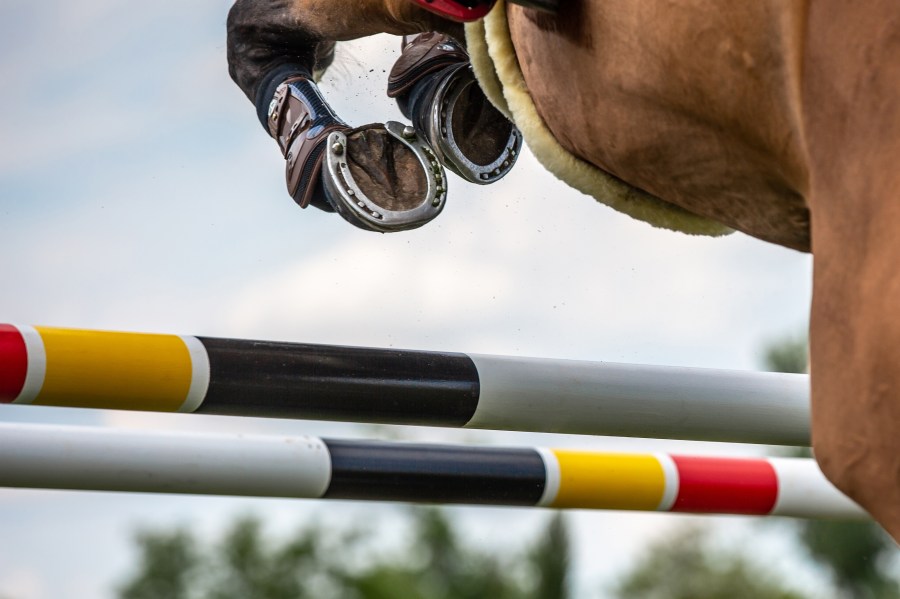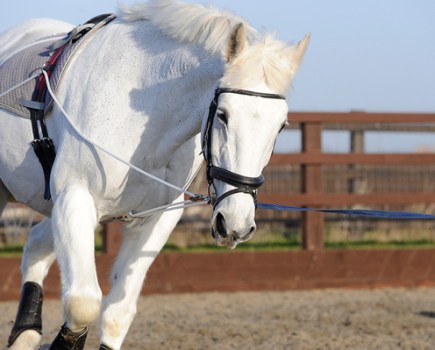There are numerous different types of horse boots on the market — and knowing which style will best suit your needs is vital before you part with your money.
A lot of riders like their horse to wear boots in order to help protect their legs from knocks and bumps. There are myriad different colours, styles and sizes to sift through, with some boots being best suited to a certain activity, such as hacking or jumping.
Technical advances mean it is now possible to buy boots that are designed to protect a horse’s leg from knocks, while ensuring good air flow to help keep the tendons cool.
What to look for in horse boots
There are three main features to look for when you’re buying horse boots: breathability (ie do they keep the leg cool), flexibility (can the horse move freely) and weight (how heavy they are).
These three considerations are essential for your horse’s wellbeing. Understanding this is key to shopping for a set of boots best suited to you and your horse’s needs.
1 Breathability
The most important thing for keeping a horse’s legs, and particularly tendons, healthy, is helping them stay cool.
That means a set of boots with good air flow and that don’t cause a leg to heat up unnecessarily is the most important thing to consider when choosing the right ones for your horse.
As a horse moves their tendons and ligaments extend and contract, and this natural process creates heat.
When you put a boot on your horse’s leg this heat potentially has nowhere to go, and it’s important to keep the leg cool as overheating can cause long-term tissue damage.
Many boots are made from breathable materials that will help to keep your horse’s legs cool. Also consider the design of the boot — you want it to encourage air flow to stop the build-up of heat.
2 Flexibility
Choose boots that are made from flexible materials that allow your horse to move freely.
If the boot is stiff and inflexible, it may restrict your horse’s joints and their natural movement, and possibly even compromise tendon function.
Boots need to allow as much freedom of movement as possible while still providing enough protection.
3 Weight
The weight of the boots is an important consideration.
Adding even a small amount of weight to the end of your horse’s leg in the form of a boot increases the effort they must put in to move, resulting in more wear and tear on joints and possibly even affecting the way your horse moves.
Also, go for a fabric that doesn’t absorb and hold water — a wet boot is heavy and may lead to your horse getting tired.
How to fit horse boots
Boots that fit correctly have the best chance of doing the job you bought them for — namely, helping to protect vulnerable areas on your horse’s lower legs.
If the boots are too big they can slip down, and could rub or cause your horse to trip. Also, dirt and grit may get inside them, resulting in rubs and discomfort.
Equally, if the boots are too small for your horse, they won’t offer enough protection to their legs, will not be comfortable to wear and are likely to rub.
Once the boot is fastened in place check that your horse can bend their knee without the boot interfering.
It’s important to fasten the boots so that they are tight enough to hold the boot in place but they must not be too tight — you should be able to slide a finger down the side of the boot once the straps are fastened.
To check your horse’s boots fit properly, follow our simple step-by-step video guide:
Does your horse need boots?
Before you rush out and buy a new set of horse boots, ask yourself this question — does my horse need them?
Not all horses necessarily need to wear boots, and the answer will vary depending on what activities you do and their conformation.
For some disciplines, such as jumping, or if your horse has conformation that means they may be more likely to knock themselves, then boots are a good idea to potentially reduce the risk of injury.
Horse boots are designed for particular jobs. Some offer strike protection, ideal for fast work and cross-country, while others only cover the back of the leg to support the tendon.
There are also those designed for everyday wear, perhaps for a quick schooling session or to protect legs when going for a hack. Boots can offer some protection to your horse’s legs from knocks and bangs.
Types of horse boots
Choosing boots that are designed to best suit the type of work you plan to do with your horse is key. This might mean owning several sets of horse boots. Don’t worry, it’s normal! Most riders have more than one set in their horse’s tack room, especially if they enjoy several disciplines.
In any tack shop you’ll find a selection of different types of horse boots that are suitable for different activities. Below I explain what the main types of boots are for use when training, hacking or competing.
Brushing boots
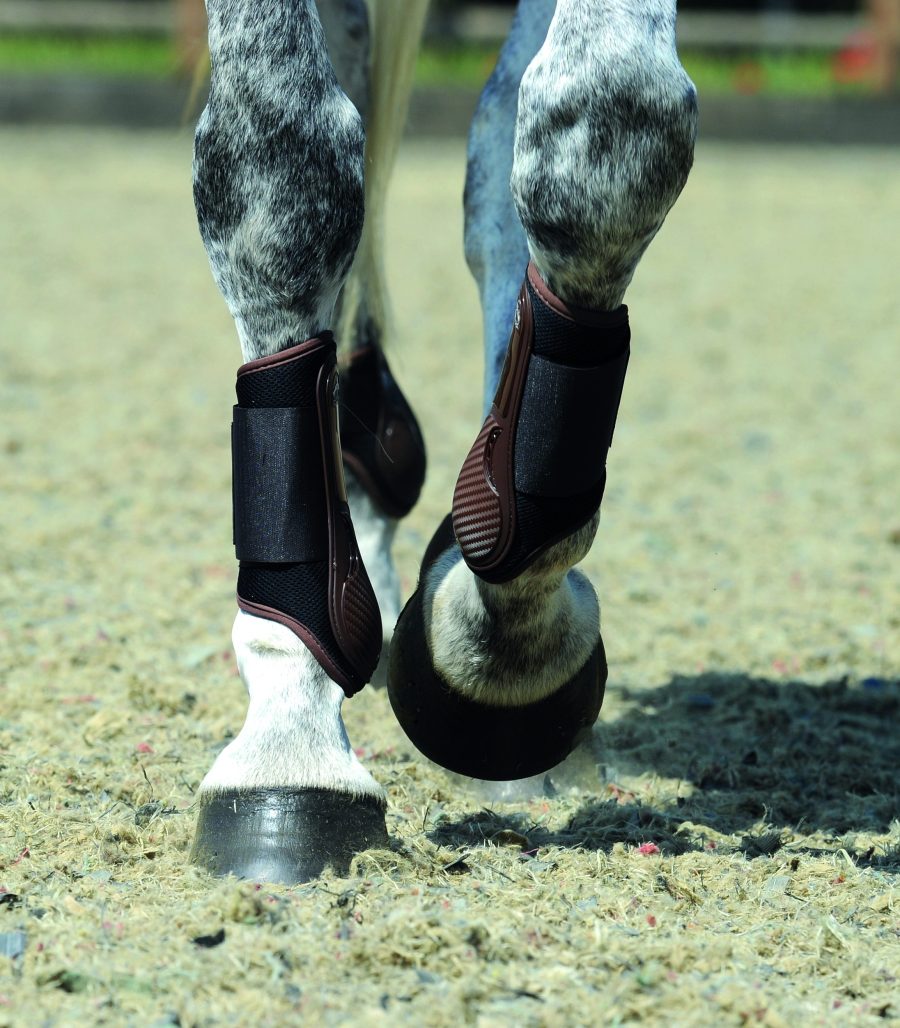
Brushing boots are versatile
If your horse will benefit from wearing boots, brushing boots are a good option. Cost-effective and versatile, these boots can be used for activities including flatwork, hacking, lunging, jumping or turnout.
They are called brushing boots as they are designed to protect the lower part of the horse’s leg from the opposite hoof knocking into it, which is known as brushing.
Originally these boots were made from leather, but thanks to the arrival of synthetic materials they are now made from softer fabrics that follow the shape of your horse’s leg for a better fit — and they are much easier to care for too.
Neoprene is a popular choice of material as it’s lightweight, soft, durable and breathable. Most brushing boots also feature a strike pad on the inside of the boot, which offers further protection from impact.
Tendon horse boots
Tendon boots are designed to be used for jumping and are usually made from a tougher material than brushing boots to provide greater protection to your horse’s lower leg when they’re jumping.
Open-fronted tendon boots are a popular choice for showjumpers, although there’s a growing number of riders using this type of boot for other types of work too.
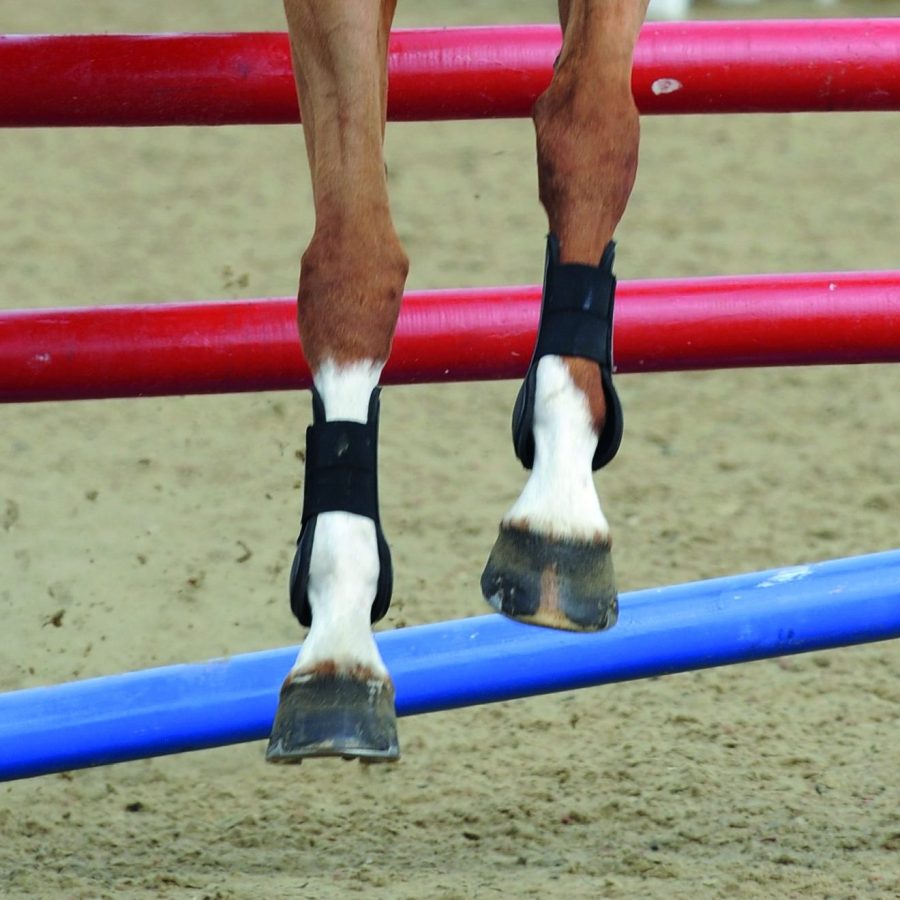
Tendon boots are popular for showjumping
These boots encase and protect the tendons on the back of the fore legs and cover the fetlock, which may be liable to injury if the hind hoof strikes the front legs when landing from a jump.
The front of the boot is open, which means your horse will feel it if they knock a pole.
Fetlock boots
Fetlock boots are usually worn on a horse’s hindlegs and are much smaller than tendon boots — as the name suggests, they cover and protect the fetlock joint from brushing injuries.
These boots usually feature a strike pad made of tough material to protect the fetlock, and a single strap fastening.
They are a popular choice for flatwork and sometimes showjumping, but fetlock boots wouldn’t usually be recommended for cross-country or hacking as they don’t offer enough protection of the legs.
Cross-country horse boots
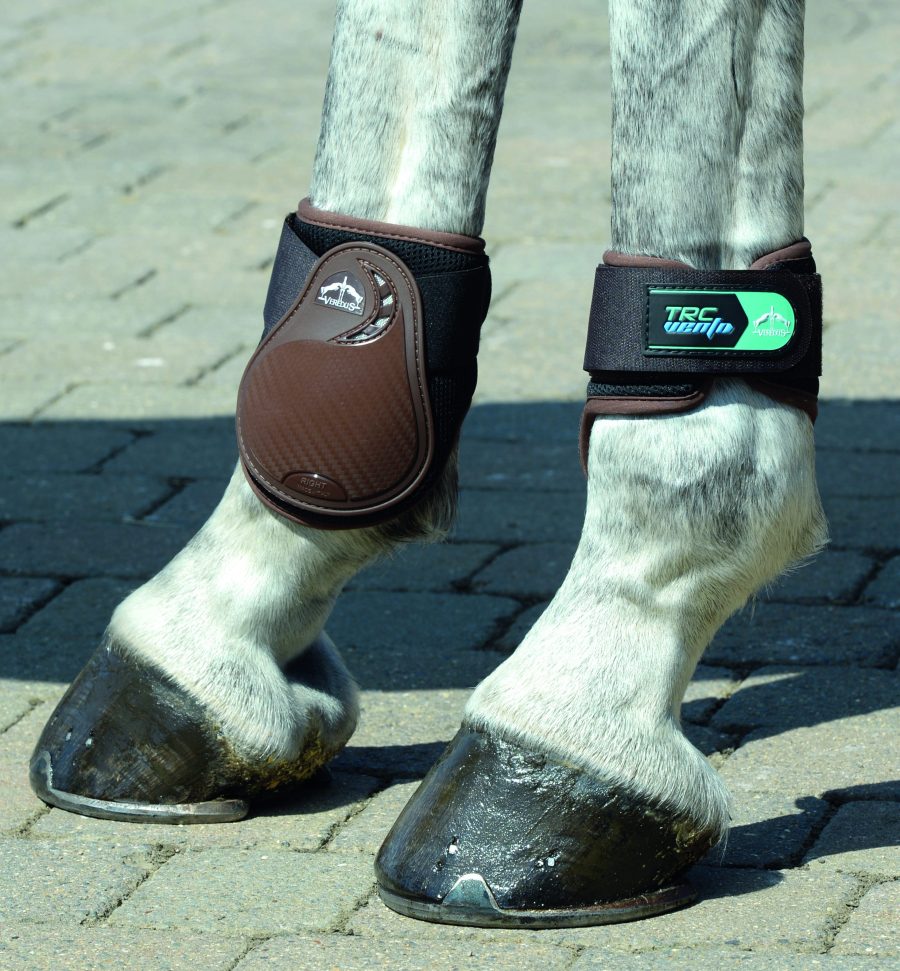
Fetlock boots on the hind legs
A greater level of protection is needed when your horse is jumping solid cross-country fences.
Boots made specifically for this discipline are designed to offer superior protection. Often a more robust outer material is used that can cope with a direct impact with a solid fence.
The lining of the boot is usually a soft breathable material and you may find additional protection on the back of the front boots and the front of the hind boots.
“Front cross-country boots need to protect the back of the horse’s leg/tendon area from strike injuries from the hind hoof, and the front of the cannon bone from knock injuries should the horse catch their leg on a fence,” explains Ali Felton, sales director at WoofWear, which specialises in equine leg protection.
“The hind boots protect the front of the cannon bone, as horses, especially when tired, can sometimes trail a leg over a fence and the cannon bone can be very badly bruised or injured.
“Many hind cross country boots will also have a speedicut design. This is where the inside of the boot goes higher up the leg towards the inside point of the hock.
“This is to protect the area from the opposite hoof hitting it while the horse is galloping. Therefore, a front and hind boot will often look very different in their design.”
Correct fit
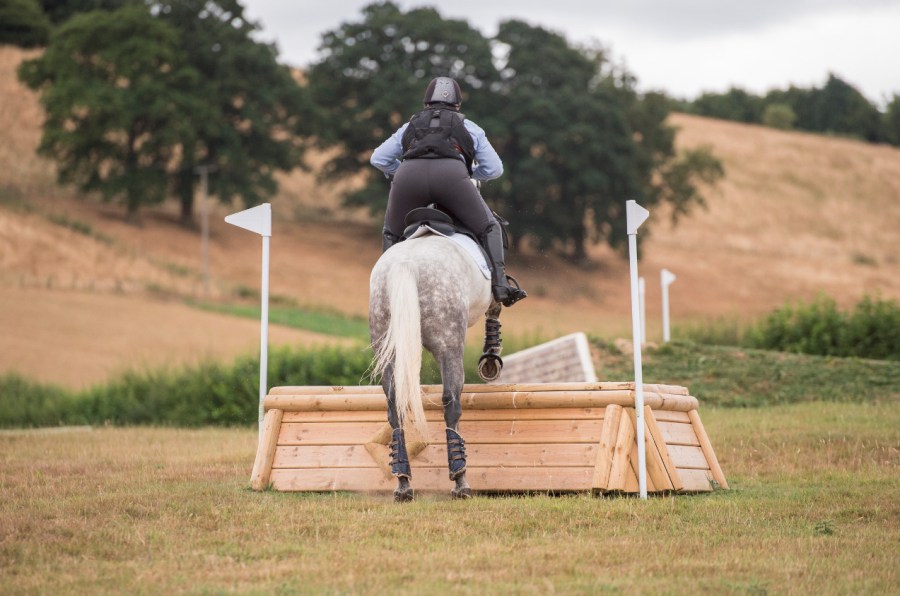
Cross-country boots should be lightweight but tough
Boots worn for cross-country need to fit snugly and be constructed from materials that do not hold water, so that they do not become heavy after a water jump.
A well-fitting cross country boot, particularly hind boots, can look deceptively large compared to your day-to-day brushing boots, but this is because they are designed to cover a larger area.
“It is important to take some time to ensure you have the right size and fit for your horse,” advises Ali.
“Boots should be lightweight but tough, have strike guards and be as breathable as possible. Don’t forget that you will be putting these boots through some tough tests – galloping and jumping in varying and difficult conditions, so they need to be the right size in order to do their job properly and stay in place.”
Always test your boots on a hack or schooling session first to ensure your horse is happy and that they fit correctly before using in competition.
Over-reach horse boots
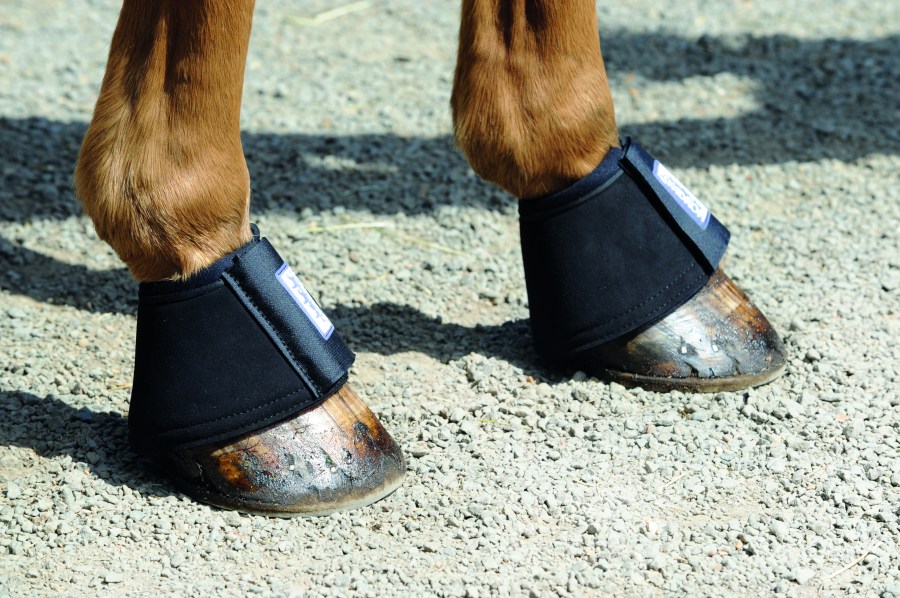
Over-reach (bell) boots are usually worn on the front hooves
Also known as bell boots because of their shape, these boots are usually worn on the front hooves.
Overreach boots surround the entire hoof, protecting the pastern, coronet band, and bulbs of the heels from overreach injuries, which occur when a hind hoof strikes the soft heel of the front hoof.
An overreach injury can be very painful and take time to heal fully — some even require stitching. Some horses naturally overreach more than others and wearing overreach boots is necessary for all activities.
Putting overreach boots on horses during turnout is also popular — again to reduce the risk of the horse damaging himself, but it’s also thought that it helps prevent a horse standing on the heel of a front shoe and pulling it off.
Types of over-reach boots
Rubber over-reach boots
These can be a ‘pull-on’ style, meaning they need to be pulled over the horse’s hoof. They can be tricky to put on and require a good amount of arm strength, but once in place they are thought to stay on better than boots with straps.
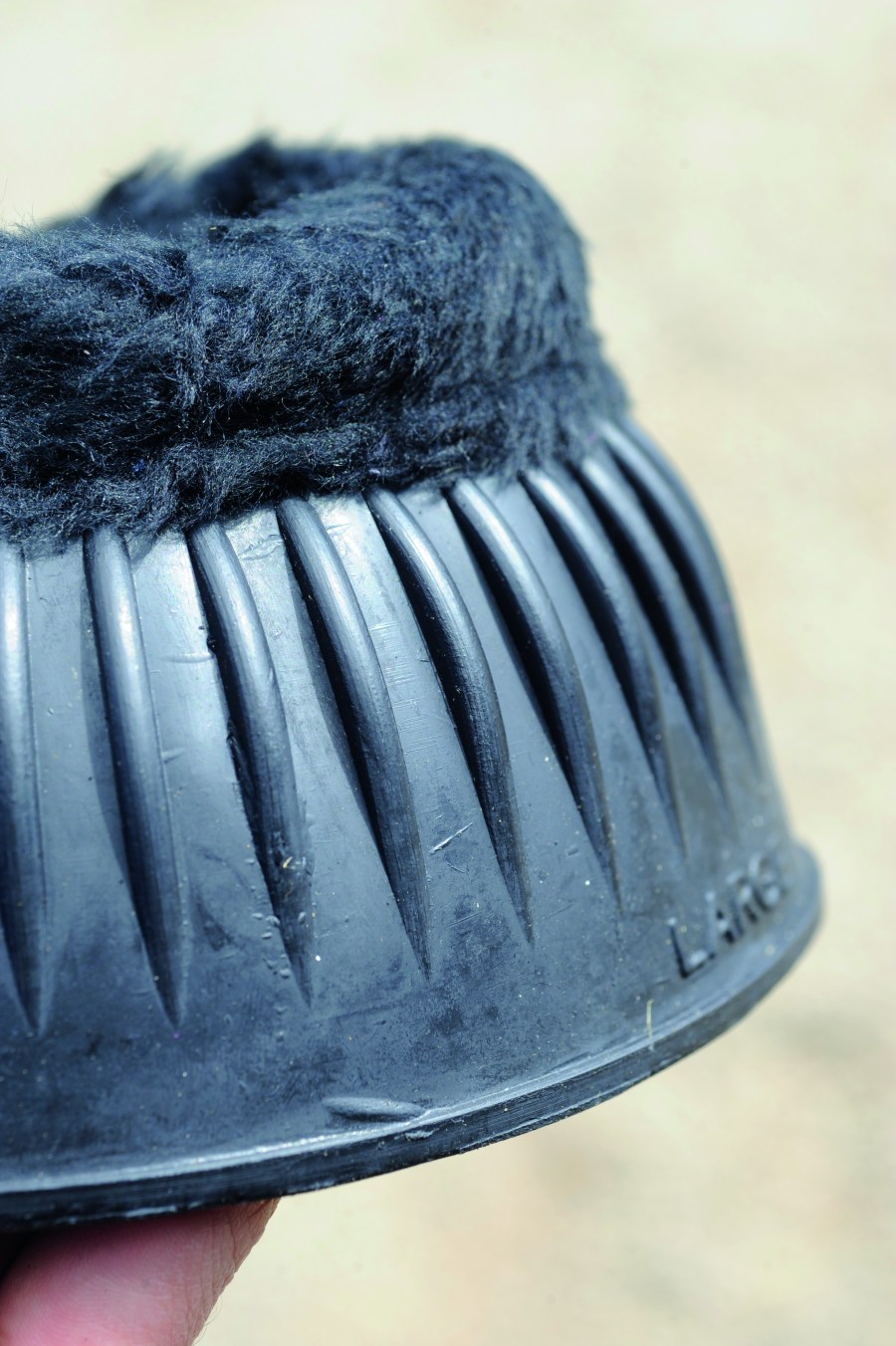
A rubber over-reach boot
Rubber over-reach boots (pictured right) can also have a Velcro fastening strap. They are inexpensive and quick and easy to use, making them a popular choice.
Neoprene over-reach boots
These are softer, thicker and more durable than rubber. Some riders also consider them more comfortable for a horse. They are secured in place with a touch-and-close strap.
Combination over-reach boots
Some overreach boots use a combination of different materials. They can have a tough outer, making them more durable and offering greater protection.
The lining is usually a softer material such as neoprene for comfort and to avoid rubbing. This type of overreach boot is a popular choice when showjumping or going cross-country.
Petal horse boots
You don’t see ‘petal’ over-reach boots very often these days. This style has a number of plastic petals attached to a strap, which does up around the coronet band. They are quite noisy as they flap when the horse moves — off-putting for some horses and riders.
Fleece trim
Over-reach boots can also feature a fleece trim, which is great for sensitive horses and for added comfort. It’s important to keep this trim clean so that it doesn’t rub your horse.
Whatever style you choose, over-reach boots should be long enough to cover the bulb of the horse’s heel and should sit snugly around the pastern. Once they are in position and fastened, you should be able to fit a small finger inside the top of the over-reach boot.
Main image: copyright Shutterstock. Inset images and video: copyright Your Horse Library/Kelsey Media Ltd
Related content
- Brushing boots tried & tested for fit, value and level of protection
- Over-reach boots: when to use them and our pick of the market
- Wound care: what to do if your horse is injured and when to call a vet
- Everything you need to know about horse joints
- Cellulitis in horses: all about this sinister cause of a swollen leg

